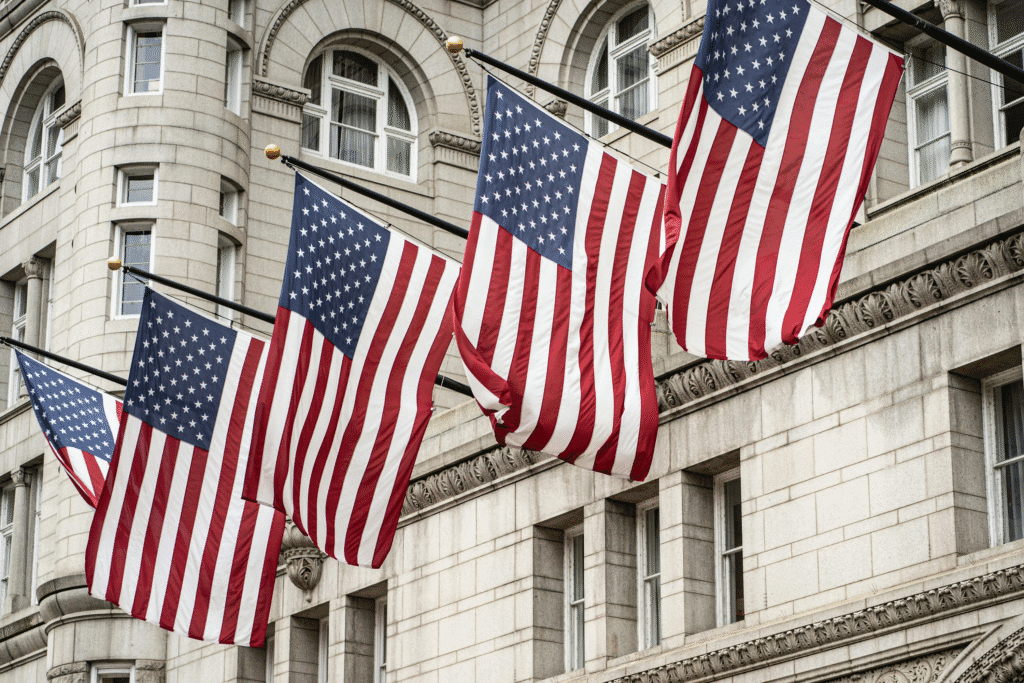The United States and the European Union are trying hard to avoid a big trade fight. Talks between them have become more serious after former President Donald Trump made a new trade deal with Japan. This deal with Japan gave some hope that the US and EU might also come to an agreement before time runs out.
Right now, the European Union and the US are discussing a possible agreement that includes a 15% basic tariff on goods from the EU. This is much lower than the 30% tariff that Trump earlier said he might place on EU products starting August 1. European officials are hoping that with some effort and negotiation, they can avoid this high tariff completely.
Even though things are still not final, two diplomats from Europe shared that the deal may also allow some EU goods to be free from this 15% tariff. That means some products from Europe might not have to pay any extra money to be sold in the US. The diplomats said they were doing their best to find a fair solution.
However, the European Union is also preparing for the worst. If the talks fail and no deal is made, they are planning to fight back. The European Commission has created a plan for strong counter-tariffs, which would target US goods in return. This plan is worth 93 billion euros. EU countries are expected to vote on this on Thursday, and most of them seem ready to support these actions.

One EU official said they would not stay quiet if unfair tariffs were put on their goods. “We want fair trade, not pressure,” the official stated. If the US goes ahead with the 30% tariffs, the EU will respond quickly. They believe it is important to protect their industries and workers from unfair treatment.
Trump’s trade deal with Japan, announced just a day before, has added pressure to the US-EU talks. That agreement included many promises from Japan, such as buying more American agricultural products, investing $550 million in the US, and ordering 100 Boeing airplanes. This deal was seen as a big win for Trump and may push the EU to reach a similar agreement before it’s too late.
The US Treasury also pointed out that Japan had a unique way of helping with the trade talks. Japan promised special financing that helped lower tariffs on cars. This part of the Japan deal could become an example for the EU discussions as well. If the EU can offer something valuable in return, like Japan did, they may be able to avoid the higher tariffs too.
While the Japan deal has made Trump look strong in trade matters, some experts say the EU is not likely to give in easily. Europe has powerful tools too, like the counter-tariffs they are preparing. Also, the EU has been a long-time trading partner of the US, and both sides know that working together is better than starting a trade war.
People in Europe are worried that high tariffs would hurt not only businesses but also everyday citizens. If US tariffs go up, many EU products like cars, food, and clothes could become more expensive. In return, if the EU puts counter-tariffs on US goods, then American products sold in Europe could become costly too. This could lead to problems for workers, factories, and shoppers on both sides.
The EU’s plan to use anti-coercion tools shows that they are serious. These tools are made to fight back when another country tries to use pressure instead of fair trade. The EU believes in open markets and fair competition. They don’t want to be forced into a deal that only benefits the US.
At the same time, Trump wants to show that he is making America stronger in trade. With elections always in sight, winning trade deals is something he can proudly talk about. He may also want to show that other countries, like Japan, are ready to make big promises to keep selling their goods in the US.
Still, even with Japan’s agreement done, the EU is a very different partner. The EU includes 27 countries, and all of them need to agree on major decisions. This makes things more complex. But even though it’s harder, the EU is trying to stay united in its talks with the US.
A trade expert explained that both sides would lose if there’s no deal. “The US and the EU are like old friends,” he said. “Fighting with each other will only hurt both of them.” Instead, he suggested they should find common ground and work together for the future.
This idea of partnership is also supported by some American leaders. Many in Washington understand that the EU is important, not only for trade but also for security and friendship. These leaders are urging both sides to stay calm and keep talking.
As the August 1 deadline gets closer, everyone is watching to see what happens. Will the US and EU reach a fair deal like the one with Japan? Or will they go into a trade war that nobody wants?
One thing is clear: both sides need each other. The US sells many goods to the EU, and the EU does the same. A good deal could bring peace, profit, and partnership. But if they fail, things might get expensive and difficult for everyone involved.
In the end, the story is not just about trade numbers or tariffs. It is about trust, respect, and working together in a world that’s becoming more connected every day. The US and EU have shared values and goals. Now, they just need to find the right path forward—before time runs out.


